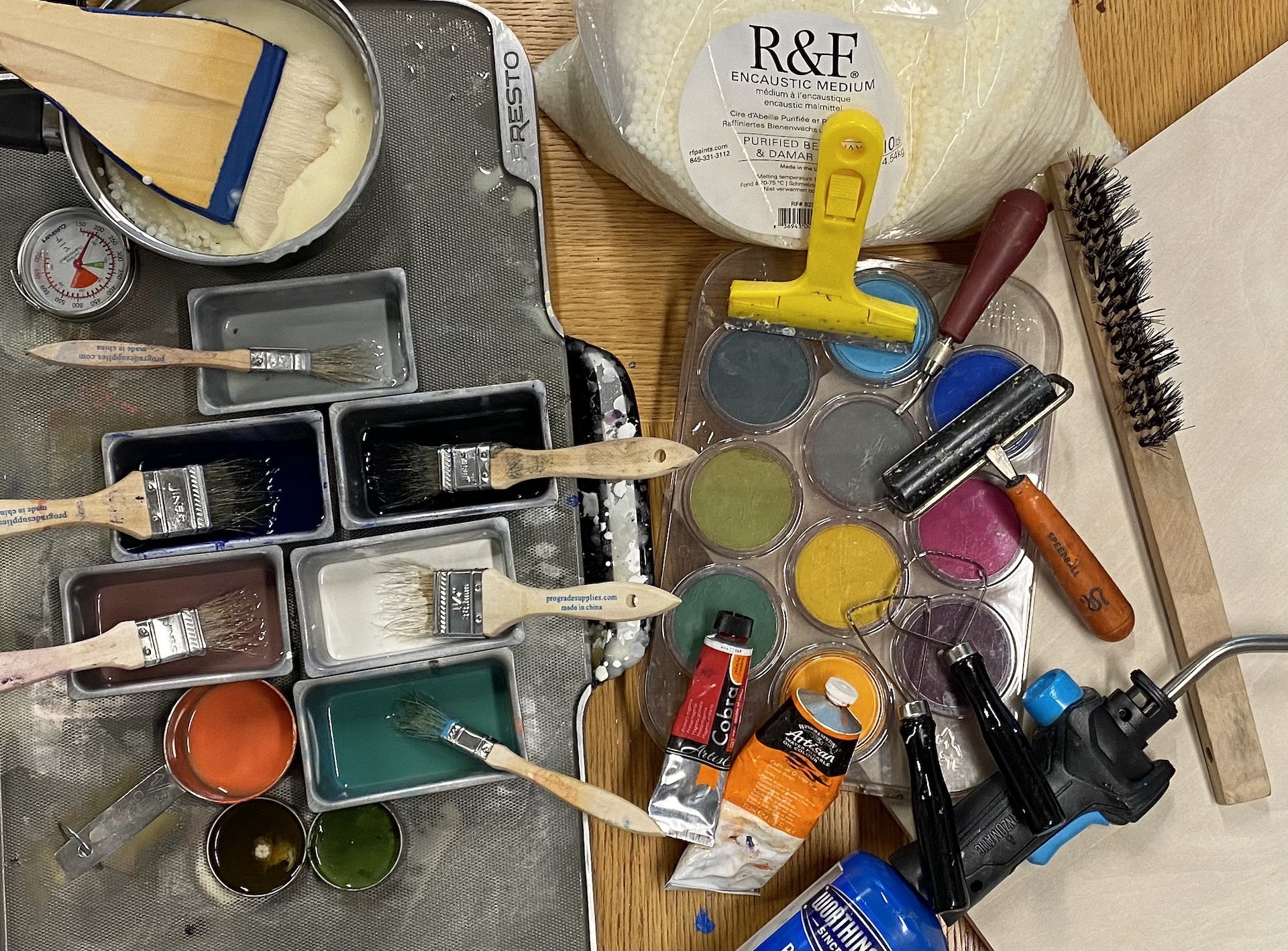ABOUT ENCAUSTIC
I have been known to want to get my hands on every new medium introduced so it is interesting and peculiar that I have found so much enthusiasm in encaustic painting- one of the most ancient art mediums. Encaustic painting is using bees wax , damar resin and pigment together as the painting medium. The element of heat is necessary for a painting to be considered encaustic. As each layer of molten wax paint is layed down in must be fused to the previous layer with heat.
The earliest known encaustic paintings were from Egyptian mummy portraits, around 100–300 AD and the technique was common in ancient Greek and Roman painting. Encaustic techniques have been used throughout art history in many parts of the world. I love using this medium for its thick painterly characteristics. Beautiful colors and textures can be created with the medium. I also like using the viscous nature of the medium as a limitation to getting too detailed. I am able to create deeply colored, layered paintings that are focused on shape and line, enhanced texturally with other natural materials.
Having used resin, paints that contain chemicals and other more toxic materials harmful to humans and the environment, I am happy to now be using materials that are more natural and eco friendly. The use of these materials makes me feel more connected to the earth, conscientious of my environment and my carbon contribution.
Encaustic paintings do not have to be varnished or protected by glass but- like any art, should be keep out of direct sunlight. Use care hanging, transporting or storing a painting to avoid chipping. Hang and store at normal room temperatures. Avoid freezing and extremely hot temperatures. Works on paper may be framed under glass but the glass should not be in contact with the artwork. During the first 6-12 months, as the wax cures, a painting may develop bloom- a naturally occurring cloudy residue. It may also occur if a painting is exposed to cold. Bloom can easily be removed by buffing the surface of the painting using a lint free cloth. If the original sheen becomes dull over time, it can also be buffed back.

